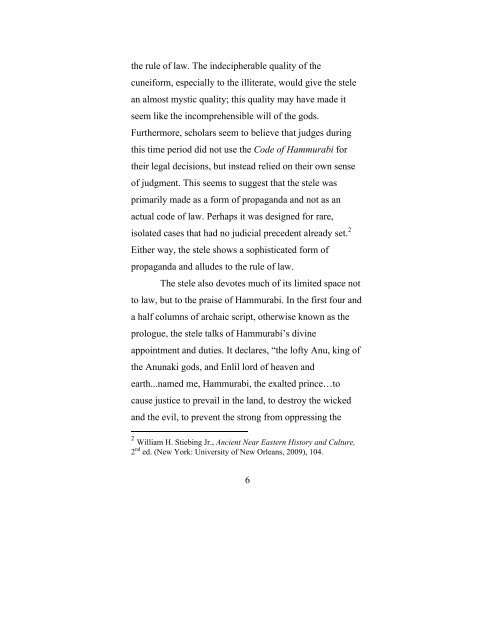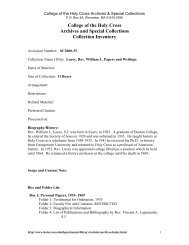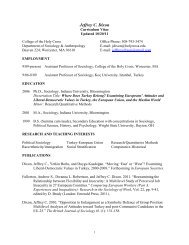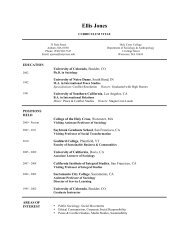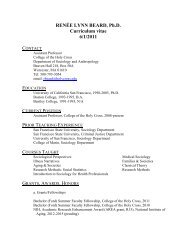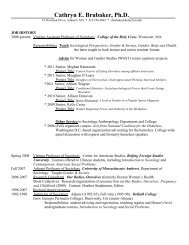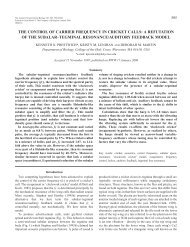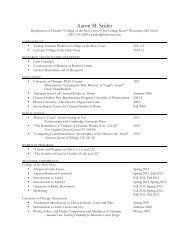Here - Academics - College of the Holy Cross
Here - Academics - College of the Holy Cross
Here - Academics - College of the Holy Cross
You also want an ePaper? Increase the reach of your titles
YUMPU automatically turns print PDFs into web optimized ePapers that Google loves.
<strong>the</strong> rule <strong>of</strong> law. The indecipherable quality <strong>of</strong> <strong>the</strong><br />
cuneiform, especially to <strong>the</strong> illiterate, would give <strong>the</strong> stele<br />
an almost mystic quality; this quality may have made it<br />
seem like <strong>the</strong> incomprehensible will <strong>of</strong> <strong>the</strong> gods.<br />
Fur<strong>the</strong>rmore, scholars seem to believe that judges during<br />
this time period did not use <strong>the</strong> Code <strong>of</strong> Hammurabi for<br />
<strong>the</strong>ir legal decisions, but instead relied on <strong>the</strong>ir own sense<br />
<strong>of</strong> judgment. This seems to suggest that <strong>the</strong> stele was<br />
primarily made as a form <strong>of</strong> propaganda and not as an<br />
actual code <strong>of</strong> law. Perhaps it was designed for rare,<br />
isolated cases that had no judicial precedent already set. 2<br />
Ei<strong>the</strong>r way, <strong>the</strong> stele shows a sophisticated form <strong>of</strong><br />
propaganda and alludes to <strong>the</strong> rule <strong>of</strong> law.<br />
The stele also devotes much <strong>of</strong> its limited space not<br />
to law, but to <strong>the</strong> praise <strong>of</strong> Hammurabi. In <strong>the</strong> first four and<br />
a half columns <strong>of</strong> archaic script, o<strong>the</strong>rwise known as <strong>the</strong><br />
prologue, <strong>the</strong> stele talks <strong>of</strong> Hammurabi’s divine<br />
appointment and duties. It declares, “<strong>the</strong> l<strong>of</strong>ty Anu, king <strong>of</strong><br />
<strong>the</strong> Anunaki gods, and Enlil lord <strong>of</strong> heaven and<br />
earth...named me, Hammurabi, <strong>the</strong> exalted prince…to<br />
cause justice to prevail in <strong>the</strong> land, to destroy <strong>the</strong> wicked<br />
and <strong>the</strong> evil, to prevent <strong>the</strong> strong from oppressing <strong>the</strong><br />
2 William H. Stiebing Jr., Ancient Near Eastern History and Culture,<br />
2 nd ed. (New York: University <strong>of</strong> New Orleans, 2009), 104.<br />
6


